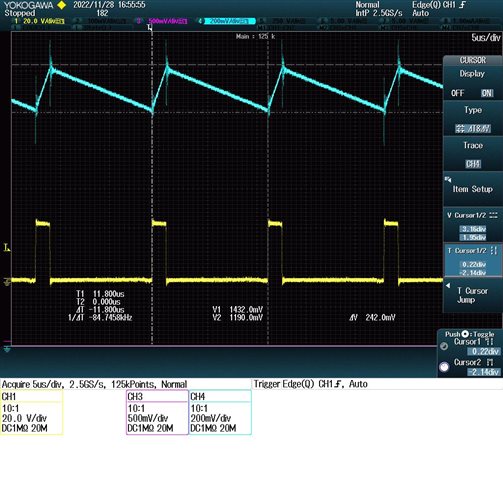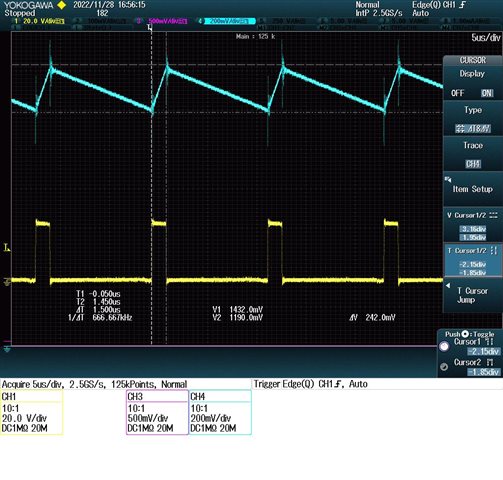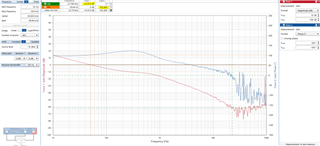Hi,
I am using the LM5164 IC for buck converter.
Power supply parameters:
Input voltage: 30-60V from batteries
Output voltage: 3.3V, 0.5W
Switching frequency set: 75kHZ
Main inductor is 100uH
Although i set the switching frequency to 75kHz, the switching frequency changes from 77kHz to 93kHz depends on the input voltage (input voltage rises -> freq rises).
Do you know why?
is this normal operation? there is no issue with my circuit?
30V input, fsw=87kHz:


60V input, Fsw=93kHz:


Circuit:

Thank you
















